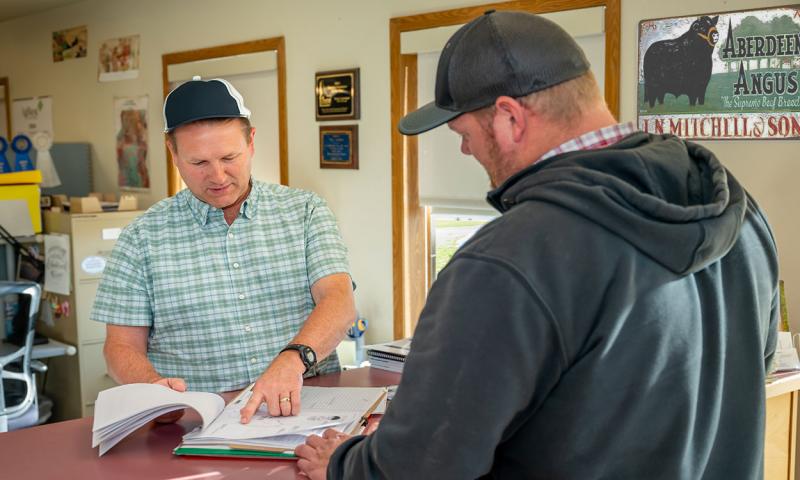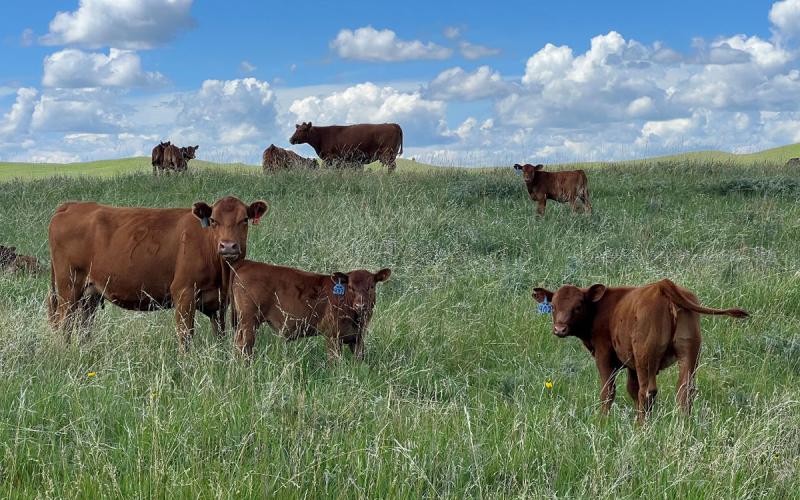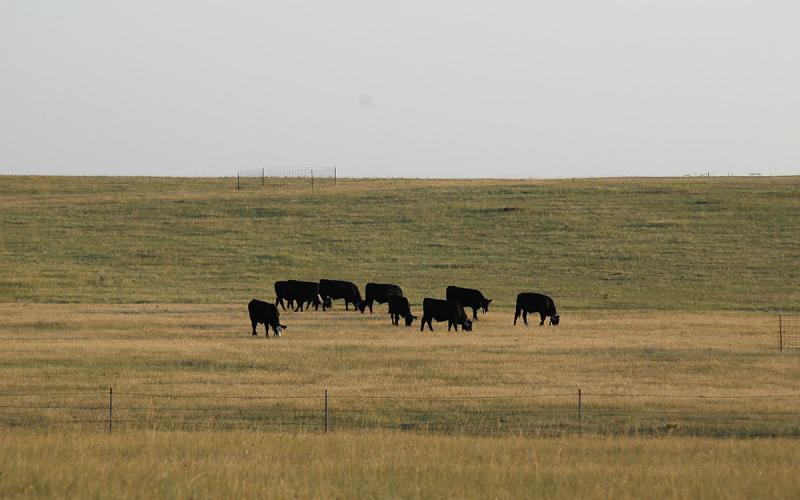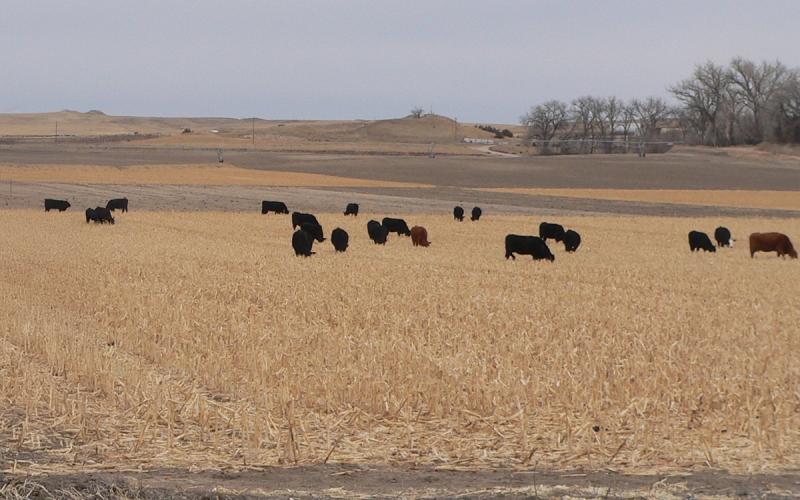Written collaboratively by Madison Kovarna, former SDSU Extension Beef Nutrition Field Specialist; and Sydney Vanderhoff, former SDSU Extension Beef Nutrition Field Specialist; and Addie Stamps, former SDSU Extension Livestock Production and Stewardship Field Specialist.
There is nothing quite like seeing green grass after what seems like a long winter. It is an encouraging reminder that spring is on its way and marks the start of a new grazing season. When preparing to turn your herd out to pasture, there are a few management decisions that need to be made. Having a simple checklist is an easy way to make sure you are prepared.
Turnout Checklist

1. Mineral
The picturesque view of lush spring grass being grazed is one that is hard to beat, but grass tetany becomes a concern. Grass tetany is a mineral imbalance in the body that presents itself as neurological symptoms, such as a staggering gait, tremors, muscle twitching in the flank, and hyper behavior. Low concentrations of magnesium in the blood are to blame for this. High potassium content and crude protein in rapidly growing pasture lower magnesium in the blood stream. Additionally, lactation pulls magnesium and calcium from the body stores, further reducing circulating magnesium. Supplying a mineral supplement that contains increased levels of magnesium 2 to 3 weeks prior to turnout and continuing for several weeks into the early beginnings of grazing season should limit incidences. We can lower our risks of experiencing grass tetany even further if turnout is delayed until forage is at least 4 to 6 inches tall.
A high-quality vitamin and mineral supplement should be provided to ensure cattle receive all necessary micronutrients for high-level performance. High-quality pasture will provide most of an animal’s needs, but to ensure there are no gaps, a high-quality mineral supplement should be available. Be sure to reference your specific mineral tag for recommended consumption levels.
2. Fences
Keeping cattle out of crop fields and your neighbors’ pasture is important in pasture management. Be sure to walk the pasture and check fences to ensure they are in good condition before cattle turnout. However, fences should be continually checked throughout the grazing season, as we know holes in fences develop all the time. Another thing to check are electric fences: is the box good to go. and is the fence reading where you want it?
3. Grass Conditions
Proper timing of pasture turnout is critical for optimal forage production (see Reading the Range: Range readiness, grazing timing and drought considerations). Monitor grazing readiness of the predominate grass species, and you may have to delay your grazing start date. One way to measure grazing readiness is to look at growing degree days (see Options for Spring Turnout).
4. Water
Make sure cattle have access to adequate drinking water. Cattle cool themselves by standing in shallow water or by sweating. With increasing temperatures during the summer grazing season, water becomes imperative for cattle welfare and performance. Be sure to check the water level and access to ponds and troughs before turning cattle out, and continue to regularly check throughout the grazing season.
Water quality is a concern during all times of the year, but even more so during the summer months. Water troughs may need to be cleaned routinely to prevent algae growth and to remove manure. Keep an eye out for blue-green algae, as this is toxic to cattle and can kill an animal in as little as 24 hours. Cattle are extremely sensitive to the palatability of a water source. Manure contamination can limit water intake and result in dehydration and a reduction in performance.
5. Fly Control & Vaccines
Take advantage of having your cattle up and administer any necessary treatments before turning them out to pasture. There are many fly prevention options to choose from, including ear tags and pour-on products; some mineral products even contain fly prevention ingredients. Dewormer and vaccines should be administered at this time also. Your local veterinarian can help develop a vaccination and treatment plan for your herd, or you can take a look at additional SDSU Extension resources (see Springtime Vaccines: Tools For Healthy Summer Calves).
While we are all hopeful that our livestock do not encounter any illness, things happen. You should have a plan for how you will treat cattle while on grass if necessary. Whether this is darting cattle, setting up panels, or if you have permanent facilities.


